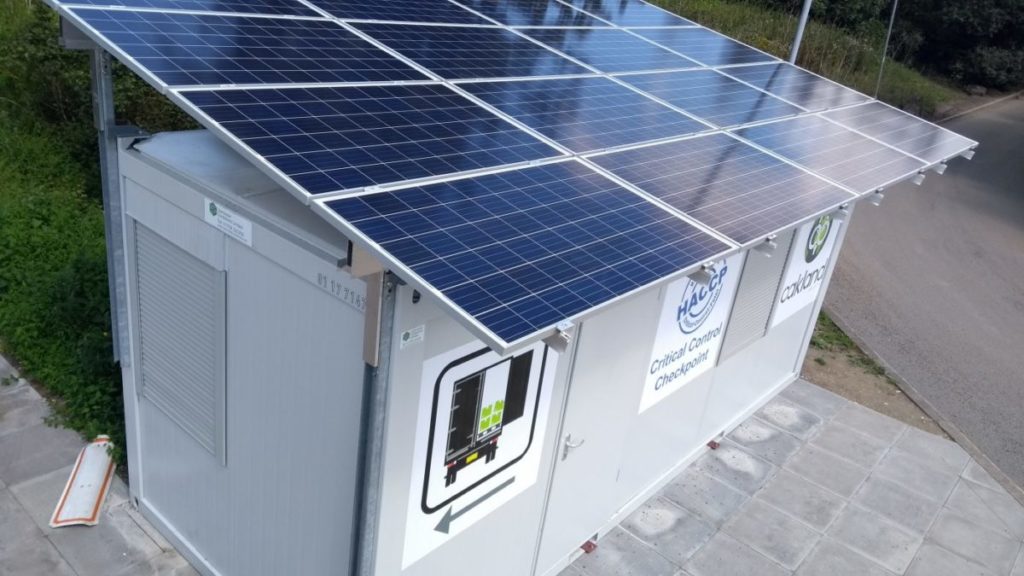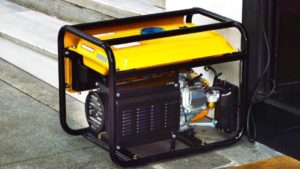Off-grid businesses face unique challenges when it comes to powering their operations.
Traditional grid electricity may not be available or feasible, and alternative energy sources like solar or wind can be unreliable or expensive.
However, a new solution is emerging – hybrid systems that combine different power sources for a stable and sustainable supply of electricity.
By leveraging advances in technology, off-grid businesses can now harness the strengths of multiple energy sources to achieve independence from the grid while reducing their carbon footprint.
With this approach, entrepreneurs and business leaders can create resilient and environmentally conscious ventures that thrive despite the challenges of limited power infrastructure.
Assess your energy needs
Determine how much energy your business needs to operate, considering factors such as the number of employees, hours of operation, and equipment requirements.
These include the number of employees, hours of operation, and equipment requirements.
The number of employees will directly impact the energy consumption of your business, as more employees will require more lighting, heating, and cooling.
Similarly, the hours of operation will also play a significant role, as longer operating hours will require more energy to power lighting, heating, and cooling systems.
The type of equipment your business uses will also have an impact on energy consumption.
For example, if your business requires specialized equipment such as refrigeration units or industrial machinery, these will consume more energy than traditional office equipment.
By carefully considering these factors, you can accurately determine how much energy your business needs to operate and make informed decisions about energy efficiency improvements and renewable energy solutions.
Choose the right hybrid system
Select a hybrid system that combines different energy sources (e.g., solar, wind, and battery storage) to meet your energy needs. Consider factors such as cost, durability, and maintenance requirements.
When selecting a hybrid system that combines different energy sources to meet your energy needs, it is important to consider various factors to ensure a reliable and cost-effective solution.
Consider the cost of the system, including the initial investment and ongoing maintenance and repair costs.
A hybrid system that combines solar, wind, and battery storage can be more expensive than a single-source system, so it’s essential to weigh the costs against the benefits.
Next, consider the durability and lifespan of the system’s components.
Solar panels and wind turbines should be designed to withstand harsh weather conditions and operate reliably over their entire lifespan, which can be 25 years or more.
Battery storage systems should also be selected based on their capacity, lifespan, and maintenance requirements.
Another important factor is the maintenance requirements of the system.
While solar panels and wind turbines require minimal maintenance, battery storage systems may require regular maintenance to ensure optimal performance.
It’s essential to consider the system’s monitoring and control capabilities to ensure that it operates at peak efficiency and alerts you to any issues or malfunctions.
Selecting a hybrid system that combines different energy sources requires careful consideration of various factors, including cost, durability, maintenance requirements, and monitoring and control capabilities.
By evaluating these factors, you can ensure that your hybrid system provides reliable and cost-effective energy for your home or business.
Optimize energy usage
Implement energy-efficient practices and technologies to minimize energy consumption. For example, use LED lighting, Energy Star-rated appliances, and automated systems to reduce energy waste.
To minimize energy consumption and reduce waste, consider implementing energy-efficient practices and technologies throughout your home or building.
One effective measure is to replace traditional incandescent lighting with LED bulbs, which use up to 75% less energy and last up to 25 times longer than incandescent bulbs.
Look for Energy Star-rated appliances, which use at least 10% less energy than standard models, and invest in automated systems that can turn lights and electronics off when they are not in use.
For example, you can install occupancy sensors in rooms that are not frequently used to automatically turn off lights and other electronics when no one is present.
These simple yet effective measures can help reduce your energy consumption, lower your utility bills, and contribute to a more sustainable future.
By taking these steps, you can make a positive impact on the environment and enjoy the benefits of energy-efficient technology.
Use energy storage
Incorporate battery storage into your hybrid system to store excess energy generated during peak periods and use it during low-demand periods. This can help reduce your energy costs and provide a reliable power source.
Incorporating battery storage into your hybrid system can significantly benefit your energy costs and provide a reliable power source.
During peak periods, your solar panels and wind turbines can generate more energy than your home requires, and this excess energy can be stored in your battery system for later use.
When your energy demands are low, such as during the night or during periods of low energy usage, you can use the stored energy from your batteries to power your home.
This can help reduce your energy costs by allowing you to use the stored energy instead of drawing from the grid.
A battery storage system can provide a reliable power source during power outages or other emergency situations, as you can use the stored energy from your batteries to power your home instead of relying on the grid.
By incorporating battery storage into your hybrid system, you can save money on your energy costs, increase your energy independence, and provide a reliable power source for your home.
Incorporate renewable energy sources
Consider incorporating renewable energy sources such as solar, wind, or hydro power into your hybrid system. These can help reduce your reliance on fossil fuels and lower your energy costs.
Incorporating renewable energy sources into your hybrid system can help you reduce your reliance on fossil fuels and lower your energy costs.
Solar, wind, and hydro power are all viable options that can provide a significant portion of your energy needs.
Solar energy, for instance, can be harnessed using photovoltaic panels, which can be installed on your property to capture sunlight and convert it into electricity.
Similarly, wind energy can be harnessed using wind turbines, which can be installed in your backyard or on a nearby plot of land.
Hydro power, on the other hand, can be harnessed using a small hydroelectric turbine, which can be installed in a stream or river near your property.
Incorporating renewable energy sources into your hybrid system can provide numerous benefits.
For one, it can help lower your energy costs by reducing your reliance on fossil fuels.
It can help decrease your carbon footprint, making your home or business more environmentally friendly.
Furthermore, many renewable energy sources are reliable and require minimal maintenance, making them an attractive option for your hybrid system.
To incorporate renewable energy sources into your hybrid system, you will need to consult with a professional solar, wind, or hydro energy expert to determine the best solution for your specific needs and location.
They will be able to assess your energy needs and recommend the appropriate renewable energy sources for your hybrid system.
They can provide guidance on how to install and maintain the system to ensure optimal performance.
By incorporating renewable energy sources into your hybrid system, you can reduce your energy costs, lower your carbon footprint, and take a significant step towards a more sustainable future.
Monitor and control your system
Implement a monitoring and control system to track your energy usage and optimize your hybrid system’s performance. This can help identify energy-saving opportunities and reduce waste.
To effectively manage and optimize the performance of your hybrid energy system, it is important to implement a monitoring and control system that tracks your energy usage and identifies opportunities for energy savings.
This can be achieved through the installation of energy meters, sensors, and control systems that provide real-time data on your energy consumption and system performance.
By leveraging this data, you can identify areas of inefficiency and waste, and make adjustments to optimize your system’s performance.
For example, you can adjust the mixing ratio of your hybrid system, optimize the scheduling of your energy sources, and identify opportunities for energy storage.
A monitoring and control system can provide you with alerts and notifications when energy usage deviates from norms, allowing you to take quick action to prevent waste and ensure optimal performance.
By implementing a monitoring and control system, you can ensure that your hybrid energy system is running at its full potential, while also reducing energy waste and identifying opportunities for energy savings.
Consider scalability
Select a hybrid system that can be easily scaled up or down as your business grows or changes. This can help you avoid costly investments in equipment that may not be needed in the long term.
When selecting a hybrid system for your business, it is essential to consider the scalability of the system.
A system that can be easily scaled up or down will help you avoid costly investments in equipment that may not be needed in the long term.
For instance, if you start with a small-scale system and your business grows, you can simply upgrade the system to accommodate the increase in demand.
This will save you the cost of purchasing new equipment altogether.
If your business experiences a downturn, you can scale down the system to match the reduced demand, preventing you from having excess capacity and unnecessary costs.
When selecting a hybrid system for your business, it is essential to consider the scalability of the system.
By choosing a system that can be easily scaled up or down, you can avoid costly investments in equipment that may not be needed in the long term.
For example, if you start with a small-scale system and your business grows, you can simply upgrade the system to accommodate the increase in demand.
This will save you the cost of purchasing new equipment altogether.
If your business experiences a downturn, you can scale down the system to match the reduced demand, preventing you from having excess capacity and unnecessary costs.
Evaluate incentives and financing options
Research government incentives and financing options available for hybrid system installations. These can help reduce the upfront costs of your system and make it more financially viable.
If you’re considering installing a hybrid system, it’s essential to research government incentives and financing options available for such installations.
These incentives and financing options can significantly reduce the upfront costs of your system, making it more financially viable.
For instance, the federal government offers a 30% tax credit for the cost of a hybrid system, which can be claimed for systems installed through 2023.
Many state and local governments offer incentives such as rebates, tax credits, and low-interest loans to encourage the adoption of renewable energy systems.
Some utilities also offer special financing options for customers who install hybrid systems, such as no-money-down financing or leasing options.
By taking advantage of these incentives and financing options, you can significantly reduce your upfront costs and make your hybrid system installation more affordable.
It’s essential to do your research and explore all the options available to you, so you can make the most financially viable decision for your specific situation.
Want More? Dive Deeper Here!
Hey there! If you’re the type who loves going down the rabbit hole of information (like we do), you’re in the right spot. We’ve pulled together some cool reads and resources that dive a bit deeper into the stuff we chat about on our site. Whether you’re just killing time or super into the topic, these picks might just be what you’re looking for. Happy reading!






